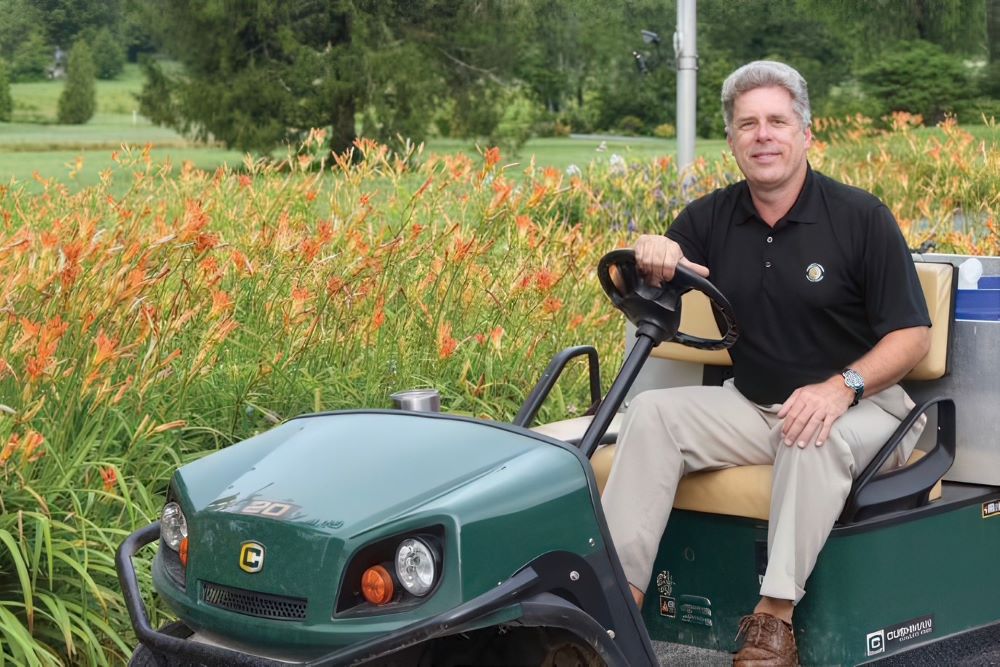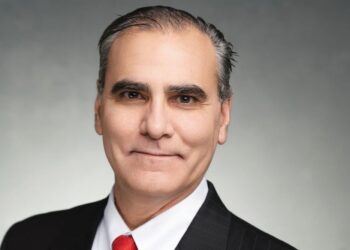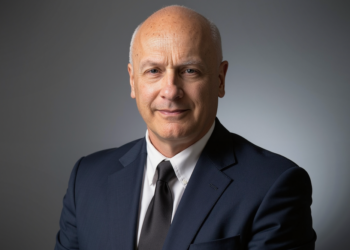Steven Neuliep played golf through high school and two years of college, but his “short game” kept him from achieving his aspirations of playing in the PGA. At the encouragement of his older brother, he shifted gears to agronomy and made a career as a golf course superintendent and director of golf course maintenance.
“It was an immensely fulfilling career,” he said. He was afforded many opportunities including volunteering at the Augusta National Golf Club, playing the Royal Portrush in Northern Ireland and achieving the Volunteer Grand Slam—volunteering for the Masters, the U.S. Open, the British Open and the PGA.
“It takes a real combination of art and science to produce a finished product golfers enjoy. And it’s an awful special place to call your ‘office.’”
AALM: Tell us about your entry into expert witness work and about your mentor, Michael Johnstone.
SN: I met Michael Johnstone, a golf course expert, while I was the president of a local golf course superintendent association. We struck up a friendship and he introduced me to the field of litigation support. He would ask me to opine on cases due to my background and my nearly 40 years of experience dealing with golf and golfers daily.
Michael referred me my first case in 2018, and the rest is history. Prior to breaking out on my own, we would have regular meetings to discuss the field and how I could use my experiences to develop into the expert witness I am today. We still get together, as colleagues, and share our experiences and continue to learn from each other’s varied backgrounds.
AALM: Have any of the cases you’ve worked on over the years stood out?
SN: I’ve learned that every case has its own nuances, and no two cases are the same even in the same situation or with similar circumstances.
Looking back, though, one of the cases that sticks out was a wrongful death case in which a golfer ran over and dragged one of the golfers in his own foursome near the
first tee.
In my professional opinion, the golfer was inattentive, panicked and hit the gas pedal instead of the brakes. However, the driver of the cart only received a small portion of the liability. It wasn’t the open-and-shut case I anticipated. The jury found the facility and golf course management company primarily liable.
This tragic case taught me that jury outcomes cannot be predicted from just the facts.
AALM: Tell us about your approach to golf course forensic investigations. How is this different from other experts?
SN: My approach is scientific, fact based, methodical and objective. Some in my field come from other disciplines related (or perhaps not related) to the golf course industry itself and attempt to cross over to the management and operations side. All my case work relies heavily on my background in the management and operations of golf courses.
AALM: Tell us about the gray areas in the standards of practice in this industry.
SN: No two golf courses are the same whether that be the topography that they are laid out on, the varied resources available to them or the area of the country that they are located in. This really complicates the ability to come up with one set of standards that can be equitably applied to all golf facilities. While the American National Standards Institute has come up with some “standards,” they are geared toward golf cart use, safety committees and safety surveys. The overriding principles that guide investigations and my opinions are what I term standards of practice—what a reasonable person would do to protect golfers, employees or neighbors from potential or actual hazards.
AALM: You continue to offer education for the golf course industry. Can you tell us about the series of webinars you’re creating?
SN: To date, I’ve presented three webinars in a series I’m creating for the Golf Course Superintendent Association of America. The focus is generally on golf course safety and measures to mitigate potential accidents and their litigation exposure. The series will address golf cart accidents, ball and club strikes, slip, trip and fall accidents, driving range and practice area accidents, and fundraiser, charity and corporate outing accidents.
AALM: Tell us about a real-life situation that resonates with who you are as a professional today.
SN: Early in my career, I served as the assistant golf course superintendent, when an accident occurred. One of our employees (the teenage son of our superintendent) was attempting to clear excess clippings from a fairway mower reel that had become clogged. Although, he turned the reels into the “off” position, the machine was still running when he put his hand in. The reels reengaged.
I was the first to arrive on the scene and was able to extricate his hand and staunch the bleeding before getting him medical attention. Fortunately, he did not lose any fingers, however, he never regained full flexibility or movement.
It left an impression about the importance of golf course safety—even the most commonsense concepts cannot be taken for granted.
AALM: Of the many courses you’ve played, which is your favorite?
SN: I have played well over 1,200 golf courses in my life. Three of my favorites are Portmarnock Golf Club near Dublin, Ireland, Sunningdale Golf Club (Old) near London, and Dunes Club in New Buffalo, Michigan. The last is a nine-hole facility I maintained for four years. It’s a hidden gem unlike any other I have ever played.








